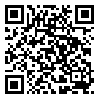Articles accepted at the time of publication
Back to the articles list |
Back to browse issues page
1- Post- Doc Researcher in Quran and Hadith Sciences, Alzahra University, Department of Quranic Studies and Hadith, Faculty of Theology and Islamic Studies, Alzahra University/Tehran, Iran
2- Ph.D, Professor, Department Of Quranic Science and Hadith, Alzahra University, Tehran,Iran. ,f_fattahizadeh@alzahra.ac.ir
2- Ph.D, Professor, Department Of Quranic Science and Hadith, Alzahra University, Tehran,Iran. ,
Abstract: (1459 Views)
The human experience is shaped through effective collaboration with forces. Johnson (1987) initially highlighted the significance of force schemas in conceptualizing events. Thus, this research seeks to explore this topic using a library-based approach, focusing on the force schemas presented in Johnson's cognitive semantics model and their application in Quranic verses related to infaq (almsgiving). In this inquiry, I seek to identify which force schemas are most commonly used in these verses and how they contribute to the understanding of the concept of infaq. In the analysis of the research data on the ethical concept of infaq in the Holy Quran, the concept of force image-schemas based on Johnson's model was used. The importance of the topic of infaq and the presence of force image-schemas in it were the reasons for choosing this ethical concept. In this regard, I examined the seven types of power in the context of infaq in the Holy Quran. The results showed that the force image-schema of obligation has the most frequency. In figurative language, the divine revelation's imperative and prohibitive commands, exert a pressure that functions as a force of compultion. After the force schema of compultion, the force schema of blockage has the highest frequency. In the Holy Quran, factors such as greed, hypocrisy, disbelief, and denial are introduced as obstacles to infaq. The force schema of "deviation from the path" does not exist in the interpretation of the verses of infaq.
Article Type: مقالات علمی پژوهشی |
Subject:
Semantics
Send email to the article author
| Rights and permissions | |
 |
This work is licensed under a Creative Commons Attribution-NonCommercial 4.0 International License. |






